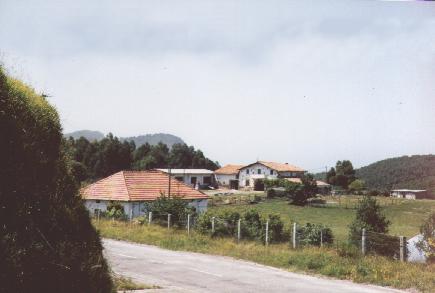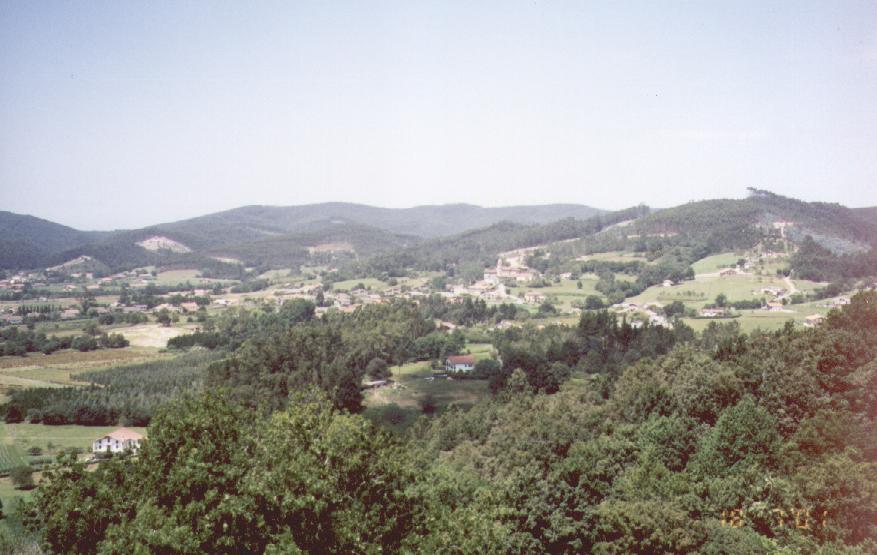We have identified three caserios Elortegui, two of them in
Maruri-Jatabe, and the third one between Lemóniz and Arminza, in Biscay.
Experts says the older caserio and origin of the name
is at Maruri, in a place known as Jatabe, meaning "lower side of Jata mountain".
It is known, even today, as "Elortegui Bekoa", meaning "lower Elortegui".
The house is a typical basque caserio, with the front eastern
oriented and a two slopes roof. It houses people and cattle, with a straw
loft under the roof.
In an early visit, about 1948, it was unoccupied long time ago.
An adjacent house, on the side of the original caserio is inhabited.
In 2001, the owners were three Elortegui brothers, about
seventy years old, the last men of their branch.
In 2025 the owners are the Elortegui descendants of a sister of the three Elortegui brothers.
Walking towards the mountain from "Elortegui Bekoa", just some hundred meters away,
the wild vegetation is mainly the elorri,
the plant origin of the Elortegui name.
Heavy robes are necessary on legs and body, because the elorri are one meter high and covers all the area.
The second caserio is known as Elortegui Goikoa, meaning "upper Elortegui".
The description of the architecture of Elortegui Goikoa
is the same as for Elortegui Bekoa, but southern oriented.
It's a more recent rebuild caserio, home of two families who have no relation with the Elortegui name.
Old documents relate it was owned by the Elortegui Goikoa family for many years.
The separation of the Bekoa and Goikoa Elortegui branches dates about 1680.
For a precise localization, Google Maps can be used:
Caseríos Elortegui
in a bigest map.The third caserio was on a terrain now occupied by the Lemoniz/Lemoiz nuclear plant. The actual caserio is a modern house build in 1951. It is occupied by Francisco Elortegui, who told us the old caserio was not a Elortegui caserio but a Bengoechea one acquired by a marriage. This branch of Elortegui is related with the australian Elortegui family.

Behind the building, the Arminza cliffs.

Maruri-Jatabe valley in 2001 July.
The San Lorenzo Church, is at the centre-right of the image.
The Church is a good reference for arriving to the caserios Elortegui, on the right, between the
Church and the trees.
Back of the photograph, the Andrakas pass, on the road toPlencia.
For reaching the houses, you must leave from Plentzia/Plencia in the Munguía
direction, following the 6320 road (referenced too as BI-2120) between Plentzia/Plencia
and Munguía. About five kilometres from Plencia it is the Andrakas pass and the road goes down.
Two kilometres away, on the left side is Maruri-Jatabe. By going to the Church and turning right
(to the east side) it is Elortegui Goikoa, restored and white painted.
About 100 metres on the east side it is the caserio Elortegui Bekoa, in a three
building group with a U shape. At the base of the U it is the original house.
At the adjacent houses are the present Bilbao Elortegui family home.
The third caserio, the most modern one, is on the BI-3152 road side,
from Arminza to Bakio, between the road and the cliffs, about three
kilometres form Arminza and before arriving to the Lemoniz nuclear plant.